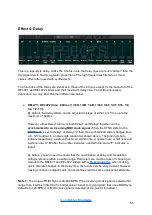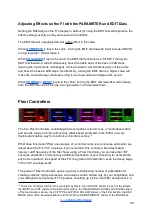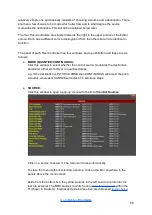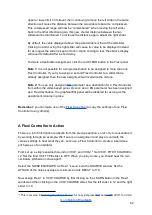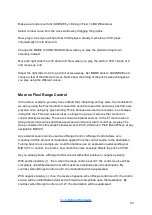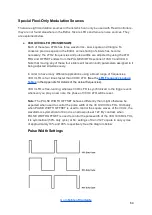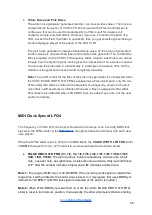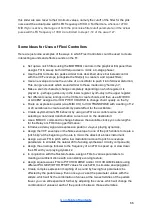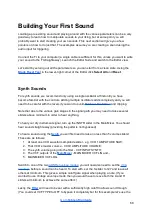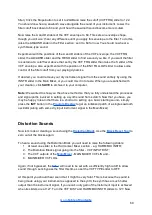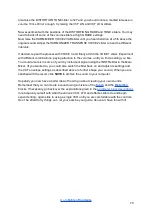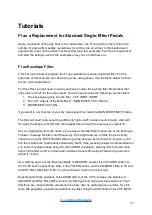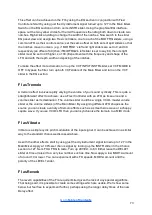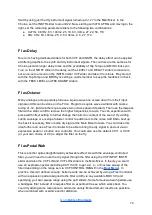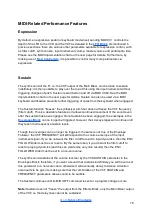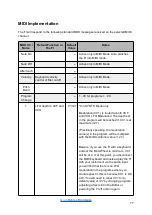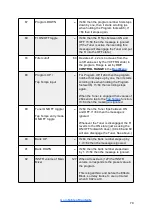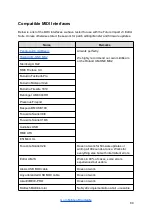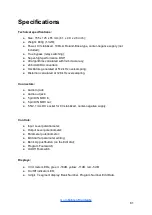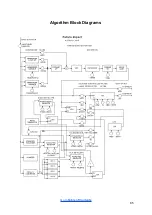
also raise the DISTORTION TONE slider to 127 and you should notice a marked increase in
volume. If it’s still not enough, try raising the VCF LIN and VCF LOG sliders.
Now experiment with the positions of the DISTORTION GRADE and TONE sliders. You may
need to back off some of the volume sliders at high GRADE settings.
Now raise the HARM MIXER VOICE2 VAR slider until you hear distortion at a 5th above the
original sound. Adjust the HARMONIZER TRANSPOSE VOICE2 slider to hear the different
intervals.
If desired, repeat the process with VOICE 3 and finally add in the VOICE1 slider. Experiment
with different combinations, paying attention to the volumes, until you find a setting you like.
You could also mix in some of your dry instrument signal using the INSTR slider in the Main
Mixer. (If you wanted to, you could also switch the filter back on and adjust its settings and
the VCF envelope settings as described above to further shape your sound.) When you are
satisfied with the result, click
SAVE
to archive the sound to your computer.
Hopefully you now have a better idea of how to go about creating your own sounds.
Remember that you can create a sound using a mixture of the
and the
blocks. If necessary, go back over the explanations given in the
to reacquaint yourself with what the various VCO, LFO and effects sliders do and begin
experimenting; again stick to using a single VCO until you are comfortable with the controls.
Don’t be afraid to try things out - let your ears be your guide. Above all, have fun with it!
70

